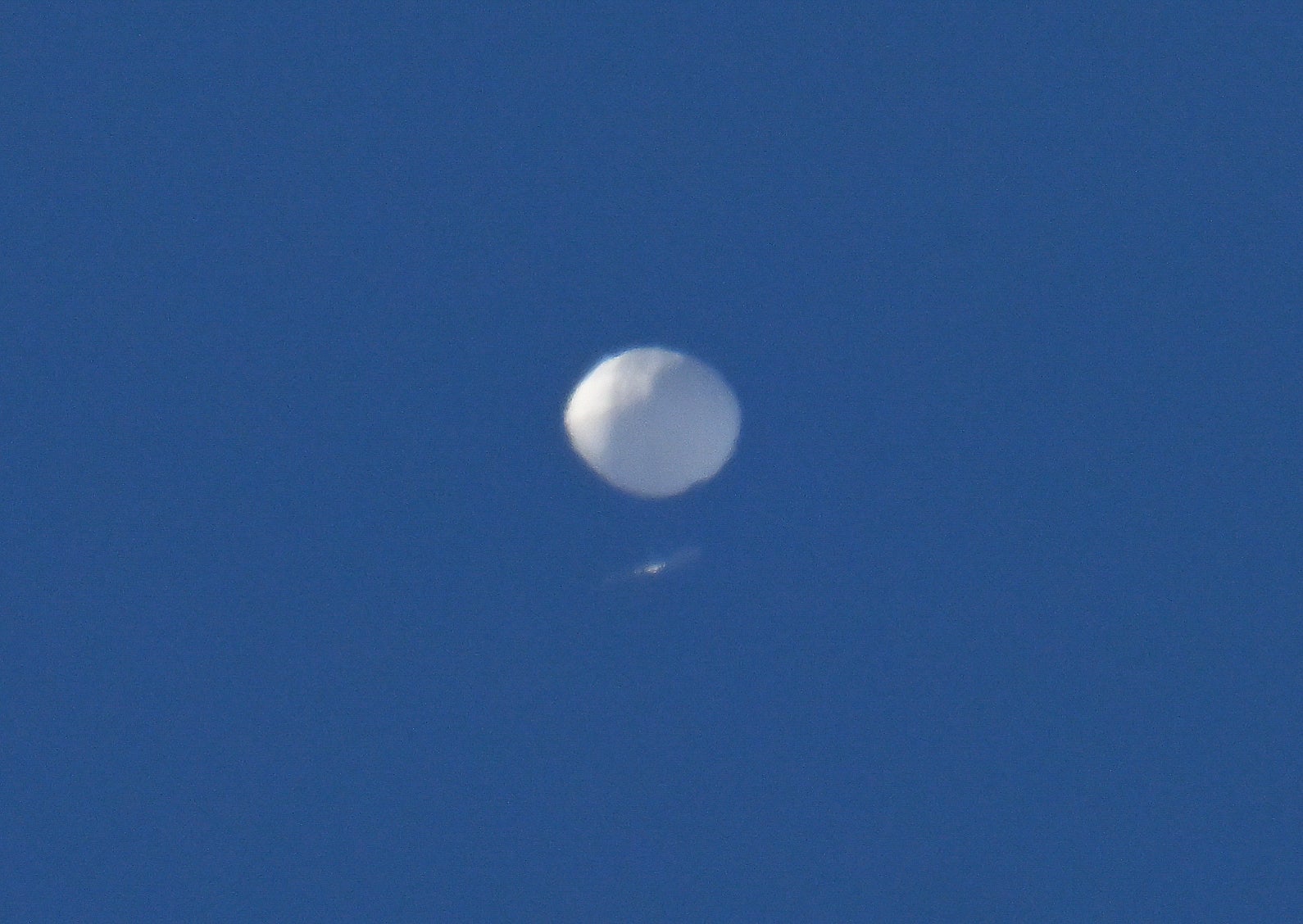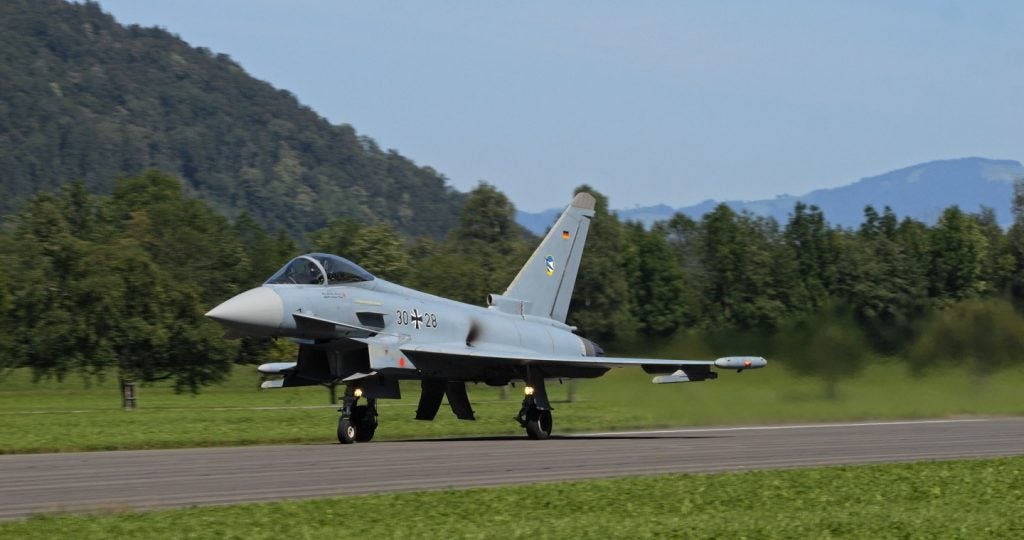
The US is continuing its efforts to recover the wreckage of a suspected Chinese spy balloon shot down off the eastern seaboard, following the interception of the platform by a US Air Force F-22 Raptor stealth fighter.
In a statement on 4 February, US Secretary of Defense Lloyd J. Austin III announced that a fighter aircraft had brought down the high-altitude surveillance balloon in the Atlantic off the coast of South Carolina, following authorisation from US President Joe Biden.
According to GlobalData the balloon was shot down by an F-22 Raptor aircraft from the first Fighter Wing from Langley Air Force Base, with an AIM-9X Sidewinder missile.
The US Navy is currently searching for the remnants of the balloon, particularly its payload.
It is believed that a successful recovery could give the US insight into China’s spying capabilities. However, this may be wishful thinking considering the State Department “wouldn’t characterise [the payload] as revolutionary” in earlier developments.
The State Department emphasise that “recovery options will seek to recover all debris and any material of intelligence value”.
How well do you really know your competitors?
Access the most comprehensive Company Profiles on the market, powered by GlobalData. Save hours of research. Gain competitive edge.

Thank you!
Your download email will arrive shortly
Not ready to buy yet? Download a free sample
We are confident about the unique quality of our Company Profiles. However, we want you to make the most beneficial decision for your business, so we offer a free sample that you can download by submitting the below form
By GlobalDataFurther claims have arisen that a second balloon has been found over Latin America on 5 February. The US Pentagon said it was aware of reports of a balloon “transiting Latin America”, which was assessed to be another “Chinese surveillance balloon”.
The Chinese spy balloon over the US had was spotted on 3 February as it apparently travelled over key strategic sites over numerous states. The balloon was tracked over the state of Montana, an area where the US keeps its siloed nuclear weapons.
The surveillance airship was positioned in the lower stratosphere, well above where citizen air traffic is active, but still within US airspace.
Balloon derails diplomatic efforts
On 3 February, the China’s Ministry of Foreign Affairs (MoFA) responded to claims that the balloon was a surveillance device, confirming its origin but adding “it is a civilian airship used for research, mainly meteorological, purposes”.
A MoFA spokesperson added that the balloon was “affected by the westerlies and with limited self-steering capability, the airship deviated far from its planned course”.
The US Secretary of State Antony Blinken postponed a planned visit to China for a meeting with his Chinese counterpart, Qin Gang, as a result of the incident. The visit to Beijing was to follow up on the agenda agreed by President Biden and President Xi in November in Bali.
Blinken noted the People’s Republic of China’s (PRC) regret but conveyed that this is an irresponsible act and a clear violation of US sovereignty and international law that undermined the purpose of the trip.
The Chinese Foreign Ministry expressed disapproval of the US arguing they were inflating the issue of a civilian airship gone off course due to force majeure.
A PRC spokesperson said: “Under such circumstances, the US use of force is a clear overreaction and a serious violation of international practice”.
The official turned the US State Department’s words against them, saying: “the US Department of Defence also noted that the balloon does not present a military or physical threat to people on the ground”, as China sought to mitigate the incident.
The nature of the threat
A senior US defence official expressed “very high confidence” that it is a Chinese spy balloon, and that this was an assessment shared across their intelligence and analytic community.
The US Pentagon said the surveillance balloon possessed “limited additive value from an intelligence collection perspective”.
The balloon was incapable of gathering any intelligence of significant value above what the PRC can collect from satellites in low Earth orbit. Nonetheless, they continued to track the balloon as it passed over the US to protect against foreign intelligence collection of sensitive information.
A senior US defence official had initially ruled out a military solution because of the size of the balloon. It was too large to shoot down and risk the safety and security of people and property from the possible debris field.
The Pentagon spokesperson expressed reassurance as the State Department resorted to monitor the situation without any interference to the balloon’s journey over US landmass. He said “we know exactly where this balloon is, exactly what it is passing over. And we are taking steps to be extra vigilant so that we can mitigate any foreign intelligence risk”.
The use of this surveillance balloon just goes to show how high-altitude platform systems (HAPS) like this one are still a present threat in the defence industry. GlobalData tells us that the road to widescale deployment of HAPS has not been a smooth one in their Thematic Report on High Altitude Platform Systems.
Leading technology companies including Alphabet and Facebook (now Meta) have seen their efforts fall by the wayside, with Alphabet’s Loon and Facebook’s Aquila closures in 2021 and 2016 respectively. However, the persistent investment the sector receives suggests it will not go away any time soon. Especially if we find that the Intelligence, Surveillance and Reconnaissance (ISR) capabilities of the Chinese balloon offers new insight into the defence applications of HAPS.
Amid the race for superior technology, alongside the palpable tension in the South China Sea, these developments of espionage will only serve to sour US-China tensions in the geopolitical climate.






